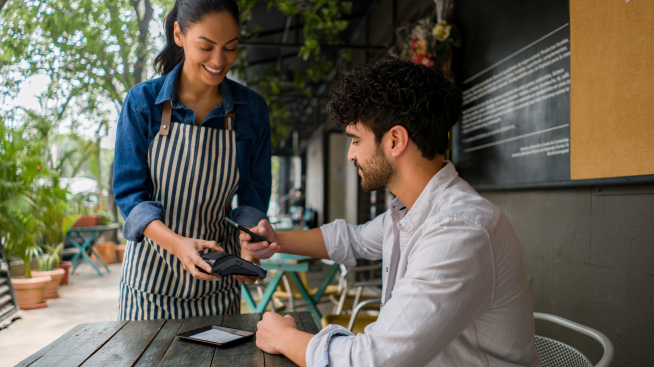Is online banking safe?

The internet has changed nearly every aspect of our daily lives. And while that can come with many benefits, new technology can also create new concerns. For example, online banking. Online banking allows customers to access their accounts within a few clicks, but is it safe? As you'll see, modern banks use an array of security protocols to help protect your data online.
How online banks can help to keep you safe
Bank account protection is a serious business. Banks typically combine several security measures to help customer data stay protected. While specifics may vary, here are some of the security measures you may find attached to your bank account:
Encryption
Encryption technology scrambles your data so that it can only be read by the intended recipient. 128-bit Advanced Encryption Standard (AES) encryption is fairly standard these days. This form of encryption is considered secure as without a key, it is estimated to take thousands of years and a lengthy calculation to break.
Multi-factor authentication
Multi-factor authentication requires users to verify a login attempt using a secondary device. When a login attempt from an unrecognized device is detected, an authentication code is sent to the user via phone, text or email. The login is approved if the user can verify it with the correct code.
Bank account activity monitoring and alerts
Some banks monitor account activity to detect potential fraud as early as possible. If there's suspicious activity in your bank account, the bank may reach out to you to verify whether you authorized those transactions. If the bank has trouble getting in touch with you, they may place a temporary hold on your account. This is typically lifted once you confirm your activity with them.
Online banking safety
Online banking can be even safer when the bank's robust security technology is paired with an alert consumer. Here are some best practices to help stay safe online:
Strong passwords
Passwords that combine letters, numbers and special characters are typically harder to crack, especially if they don’t include personal details that fraudsters could potentially find out, such as a pet name, child’s birthdate or home address. Using different passwords across different sites may also be helpful. This way, even if one password gets breached, the damage is less likely to spread to other accounts.
Public Wi-Fi
It’s hard to say for certain who can see what you send online over a public Wi-Fi network, except where the pages you visit are encrypted. You can tell when a page has been securely encrypted if the address starts with “https.” The “s” at the end is an indicator that the page is more secure. Some browsers additionally show a lock icon on the address bar to indicate secure status.
Bank account alerts
Many banks allow customers to set up text or email alerts. These notify you if a large transaction is made on your accounts, or if your balance dips below a certain level. This way, you can contact the bank as soon as you notice any unusual activity.
Phishing
Phishing is a scam used by identity thieves. It usually involves tricking someone into revealing information that can be used to breach their account. Phishing scams can take many forms. One common tactic is creating a sense of urgency to rattle people into action before they notice the cracks in the story.
For example, a scammer may call someone while pretending to be a government agent investigating unpaid taxes. This can become a way to gather information like the victim's Social Security number.
There are also email scams in which hackers send an email with an official-looking link. This may be posed as a login to your bank, or possibly to redeem a coupon. Once clicked, the legitimate-looking website allows hackers to log your keystrokes.
Avoiding phishing scams
There's no single solution to avoiding phishing scams, but there are ways to lower the risk of getting caught in one.
- Over email: Scam emails can sometimes look deceptively real, but there are some giveaways to look out for. Common signs of suspicious emails can include:
- Spelling and grammatical errors
- Text that reads like it was auto translated
- Inconsistencies with the sender's information
- Over the phone: Legitimate agencies and institutions are unlikely to ask for your personal information over the phone when calling you. The less time you spend on the line with scammers, the lower their chances of gaining anything useful.
In summary
Online banking is a convenient way to manage your finances. Staying safe online does require some vigilance, however. Banks do their part with multiple technologies designed to help keep customer data secure. When paired with proactive customers, these security features may be even more effective.



